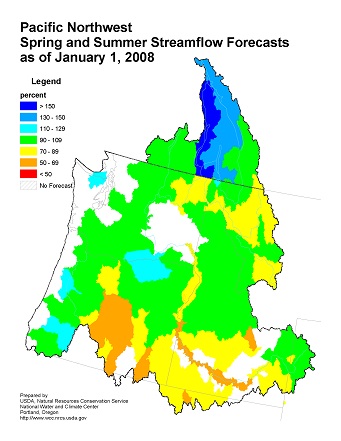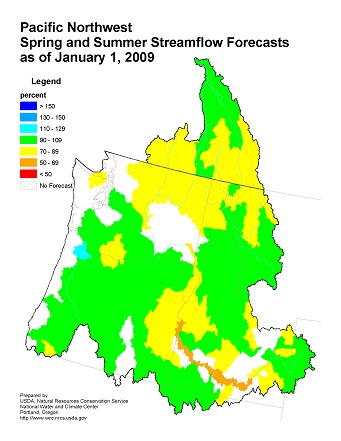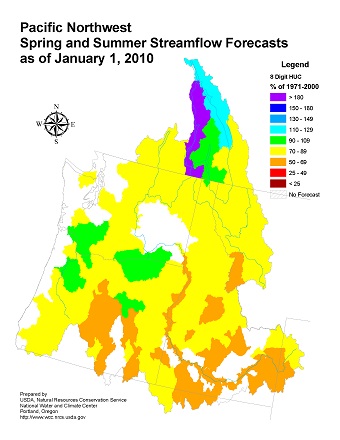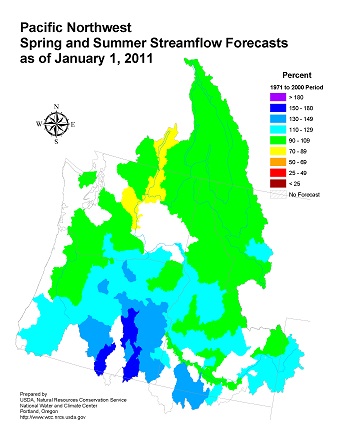Related Articles
The U.S. Department of Energy yesterday released a report on "Impacts to the Energy Sector from Climatic Conditions." It notes "climate change is happening -- and the effects are already being felt across the country." The report examines how "decreasing water availability" and other impacts are harming energy production.
This claim caught my attention:
Columbia River, Washington
Summer 2010
Below normal precipitation and streamflows in the Columbia River basin resulted in insufficient hydropower generation to fulfill load obligations for the Bonneville Power Administration. As a result, BPA experienced a net loss of $233 million, or 10%, from the prior year.
The reality is exactly the opposite. During the past few years, Pacific Northwest dams have actually had to deal with excess water flow and hydro power.
In the fall of 2010, Oregon Public Broadcasting highlighted the problem. Their story noted "When a string of storms hit the Northwest this spring, there was so much water in the rivers — and so much wind along the gorge — more power was being produced than the BPA could sell."
The same thing happened in 2011. Federal Regulators found that BPA had so much water that it had inappropriately violated wind-power contracts, refusing to take energy because of the hydro surplus. The Seattle Times reported, "For Bonneville, the toughest challenges have come in the spring and early summer when snow melts increase river flows and blustery winds boost wind production. Also, to protect migrating salmon, more water is run through the turbines rather than over the dams."
Part of the problem, ironically, is that there is currently an overcapacity of wind power and utilities are required to purchase wind energy to meet state-mandated requirements. When a surplus occurs, BPA is forced to choose between paying companies to use energy (reducing the oversupply) or violating wind-power contracts to prevent excess energy from going on the grid they control.
Another reason there is an oversupply of hydro power, as the Seattle Times notes, is that excess streamflow must be run through turbines, generating excess electricity, because spilling water harms fish. Environmental requirements to protect fish end up creating excess energy that contribute to the oversupply.
The DOE is also engaging in cherry picking by choosing 2010 and ignoring other years.
Below are the streamflow forecasts for the years 2008-2011. Note that 2010, the year DOE highlighted, was the worst year. As you can see, 2011 streamflows were significantly above normal.
The Department of Energy is very inconsistent in the years it chose for the graphic. In Kansas it chose July of 2012, but in Nebraska it chose 2006, in North Carolina it chose 2007, for Texas it is 2011 and in Florida it is 2004. Instead of looking at trends, DOE chose the particular year that suited their narrative, ignoring all other data.
In the Pacific Northwest, it not only ignored the trend, it ignored the reality on the ground that in 2010 hydro power was available in excess rather than scarce.
This is only the latest example of agencies ignoring the science and data to push a political agenda. Bad science, however, leads to bad policy and there is increasing skepticism about climate policy as the false narrative used by politicians and political agencies is visibly at odds with reality.






